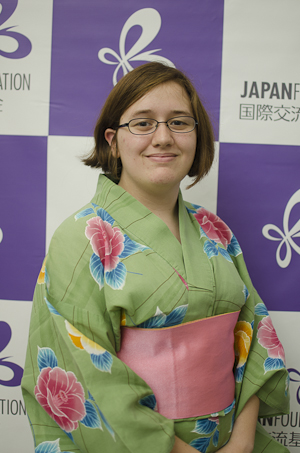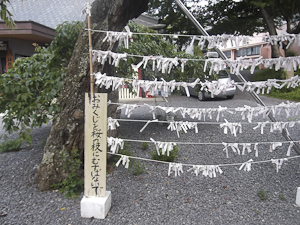

 Kathryn Lasseter
Kathryn Lasseter
Olathe North High School
Olathe, KS
My time spent in Japan as a JET-MIP participant is one that I will never forget. I have fostered a fascination for Japanese culture for years before it was later boosted by the interest I took in the language. Before I had even heard of the JET Memorial Invitation Program I often imagined what a stay in Japan would be like. But all of those daydreams paled in comparison to the actual experience. Between the despair I felt in Tohoku, the excitement of Osaka and Sendai and the overwhelming thought that I was living one of the dreams I had kept for years, I made a family of sorts. The other 31 students who I was crammed alongside in buses and hotel rooms with became so close to me by simply being there, being brilliant and being able to feel the same things that I did. This experience and these people have brought me closer to a different culture than I ever have before and given me a network of people who share the same passions as I do.
JET-MIP was divided into two distinct parts; one was the Tohoku study trip and the other was the stay in Osaka. The Tohoku trip focused on two study tours of towns that had been homes to Ms. Anderson and Mr. Dickson, the two JET-ALTs who lost their lives in the earthquake and tsunami of 2011, i.e. Ishinomaki and Rikuzentakata. We met with the mayor, tour guide, and students with whom we discussed the state of Japan-US relations. But these meetings now seem negligible in comparison to the actual towns. That was where I heard story upon story of family homes and good people by the hundreds swept away by nothing but water. That was where I saw bare concrete foundations, displaced ships in the middle of former suburbs, mangled metal, wrecked cars, ruins of train stations and piles of rubble taller than my own house. And all the while the ocean could not have been more than a few miles away. But the most striking thing about these tours was the people, who in spite of all of this happening to them not two short years ago were moving on. Not only were they moving on, they were rebuilding physically and emotionally with a streak of optimism a mile wide. I was expecting bitterness, and what I got was determination and positivity. The inspiration one could find in these people was obvious, but it came at a price that we were all too aware of.
The second part of the trip was less for humanitarian efforts (even though those elements were present in the form of a Consulate visit and meetings) and more for a cultural exchange. This was mostly achieved indirectly in the way that walking to a supermarket or getting lost and asking for directions in a foreign neighborhood can be considered one of the more effective means of learning. Classes over Kansai dialect (useful) and common mistakes that one can make during a home-stay (very useful) supplemented this exchange and made it easier to be immersed in Japanese culture during our home-stays. The time one spends with their host families is regarded as the best way to study a culture, and while our home-stays were disappointingly short, it was a significant and enlightening part of this trip.
Personally, this program got across to me that there is so much I simply do not know about Japanese language and culture. However, it also reminded me why I was so fascinated with the country and its people, and if nothing else my listening comprehension has improved greatly. My studies and interest in Japanese culture had grown a lit lackluster considering how little exposure I have from day-to-day life in Kansas. But to actually go to Japan and be among people who felt a good deal of what I did was quite a jolt to my curiosity. The JET-MIP experience has encouraged me to continue taking Japanese in college and to go back one day, hopefully to the Tohoku area and Osaka so I can thoroughly examine things that I might have missed. I can only hope that once I tell my story, it will urge others to take an interest in Japan, if not obtain the same goals that I have. On a broader scale, this trip has made me consider just what international relationships can do for a nation and has brought a new importance to them.
It is well-known that JET-MIP was created in honor of the two JET teachers who lost their lives during the earthquake and resulting tsunami. To the families and friends of Mr. Dickson and Ms. Anderson I’d like to extend my condolences and say that these two will not be forgotten with the support network that has sprung from the tragedy. I also would wish for Ms. Anderson and Mr. Dickson themselves to know that while their deaths were untimely and unfair, in their wake many good people have gathered to celebrate and remember their lives. Their stories have launched many students into an experience that is unparalleled in its originality and can be seen as an investment in the future generations taking in the country that they so obviously loved. I can’t say anything that hasn’t been said before, but this trip changed my life. And the fact that I am able to say this change is because of Mr. Dickson and Ms. Anderson is a fact that I wish they could know themselves.

Fortunes that had been tied in a shrine in Ishinomaki.